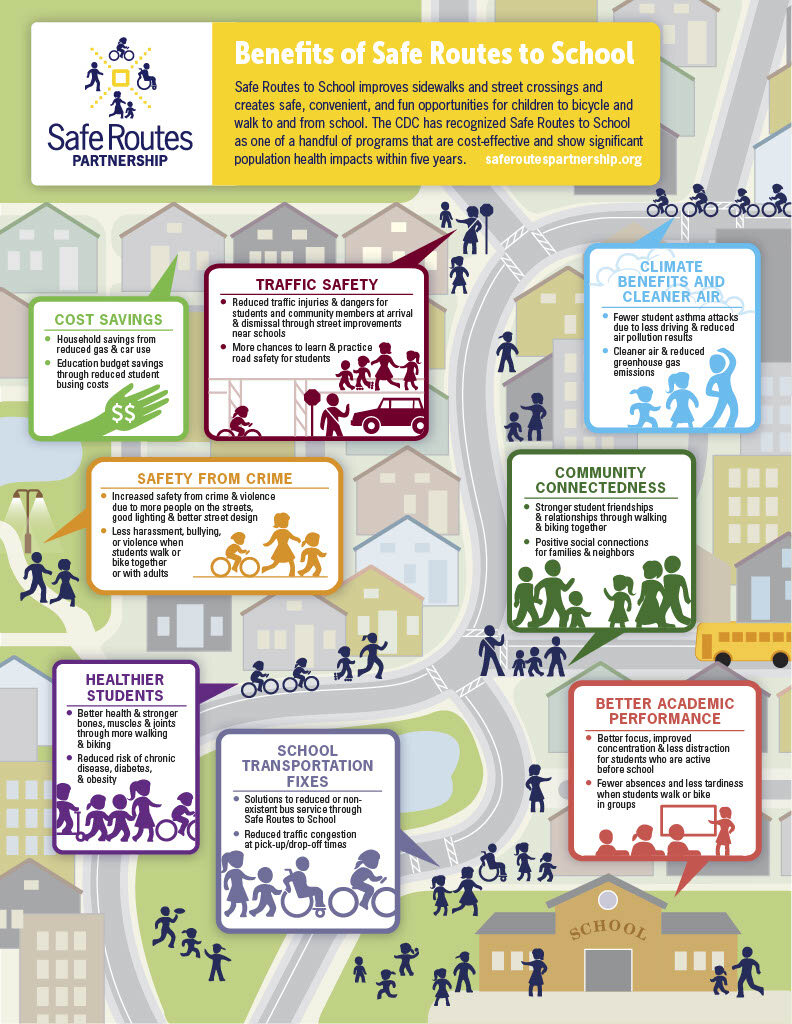What Is Safe Routes to School?
Safe Routes to School (SRTS) programs strive to improve accessibility to walking, bicycling, and rolling to school for students and their communities. SRTS work and efforts take place at federal, state, and local levels. While SRTS projects have existed in the U.S. since the 1990s, the federal government has provided funds for SRTS programs since 2005. These funds go to state departments of transportation, where they are allocated to specific projects at local school districts and governments. Local SRTS coordinators provide bicycling and walking safety education, encouragement events, and advocacy for infrastructure improvements. Their work is guided by the six Es: Engagement, Equity, Engineering, Encouragement, Education, and Evaluation.
Safe Routes Partnership is the national non-profit organization that coordinates Safe Routes to School efforts and advocacy nationwide. These are some of the benefits they list for Safe Routes to School:
The 6 Es
The 6 Es describe the elements that make Safe Routes to School programs successful:
Equity
Working to understand the barriers to accessing resources and opportunities that affect different groups in our community; and crafting policies, programs, and overall approaches that address these various challenges and needs. This means ensuring that programs authentically benefit and provide resources for historically marginalized communities, including students of color, LGBTQIA+ students, students with disabilities, low-income families, neurodivergent students, and others.
Engineering
Assessing the infrastructure around schools and advocating for improvements to sidewalks, bicycle lanes, and street design to make the built environment safe for walking, bicycling, and rolling to school for all ages and abilities.
Education
Creating and implementing consistent, accessible programs to teach safe walking, bicycling, and rolling to students, parents, teachers, and community members. This includes in-classroom curricula and instruction outside the classroom.
Engagement
Connecting directly with students, parents, teachers, and community members to hear their needs and to work together on designing programs that will authentically benefit their schools and build connections with local resources.
Encouragement
Providing activities and events to promote walking, bicycling, rolling, and other multi-modal transportation options.
Evaluation
Keeping track of successes and challenges in each area to improve ongoing programs and activities.
More Information
To learn more about Safe Routes to School programs, history, and policies on a national level, visit the following links from the Safe Routes Partnership:
Visit Our Program to find out what’s happening in Salem-Keizer!

